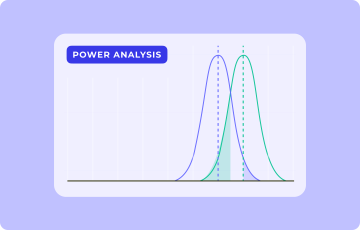
How to grow your user insights landscape
This is the 4th of 4 articles covering Conversion Jam 2021, the largest conversion and growth event in the Nordics.
Give a CRO an insight, and he creates uplift for a day. Teach a CRO to find insights, and, well, you know the rest.
On Dec. 2, Conversion Jam held the final online session with experts in growth and experimentation, entitled Growing your user insights landscape.
As experimenters, we often turn to a standard toolbox when we need to come up with user insights—e.g. User testing, session recordings, and surveys.
However, by thinking outside the box and expanding this landscape, we can find new methods to find insights, allowing us to understand customers at an even deeper level.
The session featured:
- Terry Pierelli, Musician and Senior CRO Manager at The CROsultant
- Erin Weigel, Senior Design Manager at Deliveroo, formerly Principal Designer at Booking.com

Create an “Insights Garden”—your company’s own panel—with existing and brand-aware users
What is an Insights Garden? An Insights Garden is like a free version of a paid panel on steroids, where the brand themselves builds out and takes ownership of the focus group/survey. Besides reducing the cost of research to nearly nothing, it allows companies to connect their qualitative and quantitative data in an innovative way.
Build a global survey. Use all sorts of questions as you would a regular survey. Question categories include:
- Demographic
- Psychographic
- Attitudinal
- Brand-related
- General behavior
- Buying behavior
- Channel-related
- Usage/frequency questions
Form questions with real insights in mind. “Each question has a specific and documented function that was either to become part of a new metric that we wanted to track, a new segment or to answer an important business question.” Said Terry.
Ask customers and email opt-ins the “Golden Question.” Anticipate creating an Insights Garden in advance by asking all customers and email subscribers, “Can we contact you for opportunities to participate in future studies?” According to Terry, “In our top markets, we saw over 60% of people saying yes.”
Promote your survey. Using a discount or similar tactic, promote the offer where your existing users or brand-aware users already are. E.g. on-site, through social media, CRM, app notifications.
Make sure existing customers opt-in with the same email they used before. The Insights Garden will later allow you to connect survey responses and qualitative data with A/B tests and on-site behavioral data. Therefore, respondents should use the same email.
Clean and filter the survey data. Remove duplicate responses and people who filled out your survey too fast. Filter the data into segments with n>3 after 2 filters are applied. For example “Couples that fly” would be “People interested in flight deals” and “People who traveled in pairs” and should have more than 3 respondents.
Export the data into your Insights Garden and combine it with data analytics. This allows you to have a full overview of your users and generate powerful insights. For example:
- How can we personalize our offering to maximize revenue or engagement?
- Which user attributes are most predictive for conversion?
- Why did my A/B test fail?
Combine backend survey tables with backend user data. With both the survey plus A/B test and eCommerce data linked via one user email, you can combine the two data sources and start making powerful reports.
Find inspiration for user insights by looking around you in the real world
Port useful things from the real world to your digital product. “Take a look around you, observe shoppers shopping—really immerse yourself in the physical environment to figure out how you can port those concepts with your golden question into your digital product.” Said Erin.
Find your “IKEA candle.” IKEA always keeps candles at the top of the stairs by the shopping bags when you enter the store. They are universally low priced and universally desirable. Likewise, find an analog for this in your store and make it highly visible so users put it into their carts—this nudges primes them to purchase what they actually came to buy.
Find your “Michaels coupon.” Retailer Michaels sent out catalogs with 40% off every month, which acts as a trigger to come to the store. They also follow this up with a huge stack of those same catalogs right by the entrance. “At that point, the coupon changes from being the trigger to get people to go to the store, to being the grease that actually primes people to spend the money and start putting things into their basket,” said Erin. One digital equivalent is to follow up discount offers presented over email or display ads with the same offer presented prominently on the landing page.
Note how offers and products are presented in brick-and-mortar stores. Look at how stores are displaying sales and prices and ask what kind of things you can do on your digital shop to improve and show what kind of value your customers are getting. Don’t neglect small, easy tweaks and wins in your UI.
Make your website more accessible. Find where you’re failing your customers in terms of accessibility and make it better. If people with different impairments are having trouble using your site or product and you make it better, it ultimately becomes easier for everybody to enjoy it.



